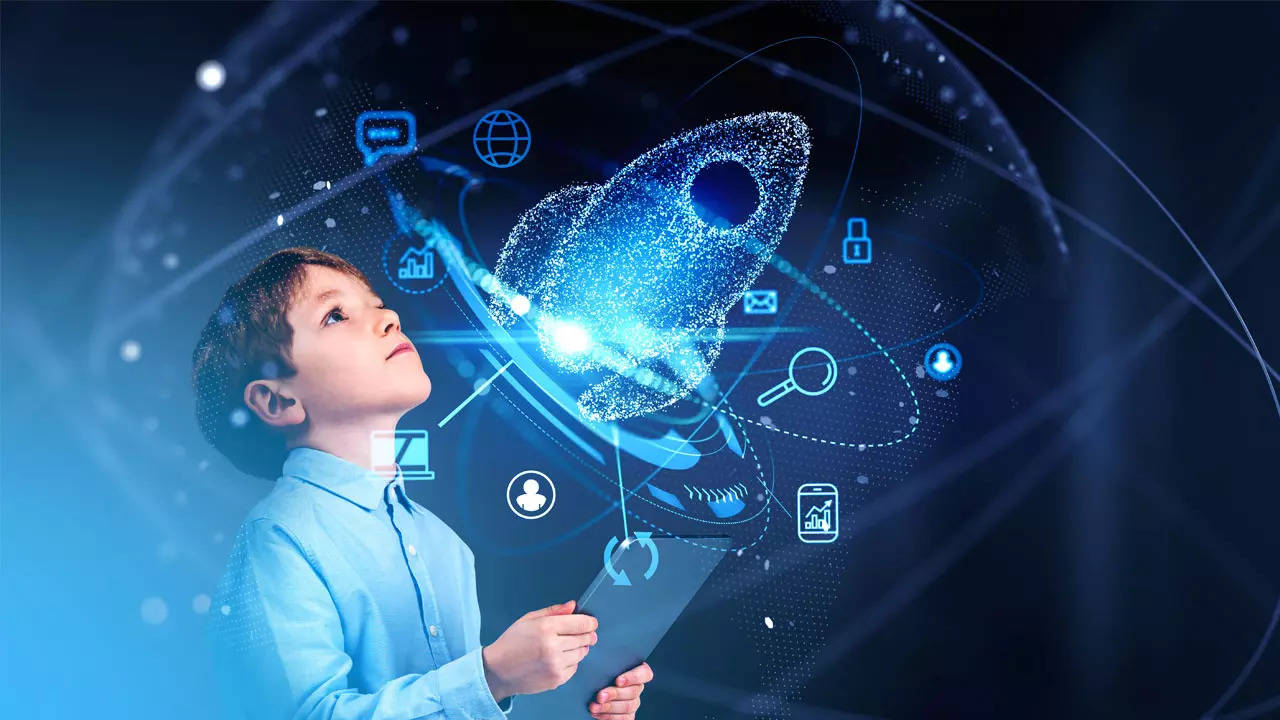In today’s rapidly evolving world, technology has become a cornerstone of education. From interactive lessons to online resources, the integration of technology in the classroom enhances the learning experience for students of all ages. This article explores various ways technology can enhance learning, its benefits, challenges, and best practices for implementation.
The Role of Technology in Education
Technology has fundamentally changed how we access and share information. In education, it serves as a powerful tool to facilitate learning, engage students, and promote collaboration. By leveraging various technological tools, educators can create dynamic learning environments that cater to diverse learning styles and needs.

1. Interactive Learning Experiences
One of the most significant advantages of technology in education is its ability to create interactive learning experiences. Traditional lectures can often be passive, leading to disengagement. However, technology offers several tools to make learning more engaging.
Interactive Whiteboards
Interactive whiteboards allow teachers to present lessons in an engaging way. They enable real-time interaction, allowing students to participate actively in discussions, solve problems, and share their ideas visually. This interactive approach not only keeps students engaged but also enhances their understanding of complex concepts.
Educational Apps and Software
There is a plethora of educational apps available today that cater to various subjects and skills. For instance, apps like Kahoot! and Quizlet allow students to engage in fun quizzes and games, reinforcing their knowledge while making learning enjoyable. These platforms encourage healthy competition and motivate students to participate actively.
2. Access to a Wealth of Information
The internet has made information more accessible than ever before. With just a few clicks, students can access a wealth of resources that enrich their learning experience.
Online Libraries and Databases
Students can now explore extensive online libraries and databases. Resources like JSTOR and Google Scholar provide access to academic papers, journals, and books that were once limited to physical libraries. This expanded access enables students to conduct thorough research and gain a deeper understanding of their subjects.
E-books and Digital Textbooks
Digital textbooks are not only cost-effective but also interactive. Many e-books come with built-in quizzes, videos, and interactive elements that enhance comprehension. This multimedia approach caters to different learning styles, making it easier for students to grasp complex information.
3. Personalized Learning
Technology allows for personalized learning experiences tailored to individual student needs. This customization can significantly improve student engagement and achievement.
Adaptive Learning Technologies
Adaptive learning platforms use algorithms to assess a student’s strengths and weaknesses. They then provide personalized resources and activities that target specific learning gaps. Programs like DreamBox and IXL adjust the difficulty of questions based on student performance, ensuring they are challenged yet capable of succeeding.
Learning Management Systems (LMS)
Learning Management Systems, such as Moodle or Canvas, enable educators to create customized learning paths for students. Teachers can assign tasks, monitor progress, and provide feedback in real-time, ensuring that each student receives the support they need.
4. Enhanced Collaboration
Technology facilitates collaboration among students, teachers, and even experts worldwide. This connectedness enriches the learning process and fosters essential teamwork skills.
Online Collaboration Tools
Platforms like Google Classroom, Microsoft Teams, and Slack enable students to work together on projects from anywhere. These tools allow for file sharing, real-time editing, and communication, making group work seamless and efficient. Students learn to collaborate and communicate effectively, preparing them for the demands of the modern workforce.
Virtual Classrooms and Webinars
Technology allows for virtual classrooms where students can learn from experts around the world. Webinars and online guest lectures expose students to diverse perspectives and experiences, enriching their education. This global reach can inspire students and broaden their horizons.
5. Engaging Visual and Multimedia Content
Visual learning aids can significantly enhance understanding and retention. Technology provides various ways to integrate visual content into lessons.
Videos and Documentaries
Platforms like YouTube and educational websites offer countless videos and documentaries that can complement classroom learning. Visual content can clarify complex concepts and provide real-world examples, making lessons more relatable and engaging.
Virtual and Augmented Reality
Virtual Reality (VR) and Augmented Reality (AR) offer immersive learning experiences that traditional methods cannot replicate. For instance, VR can transport students to historical sites or distant planets, providing a hands-on approach to learning. This engagement leads to deeper understanding and retention of information.
6. Real-Time Feedback and Assessment
Technology enables immediate feedback, allowing students to learn from their mistakes in real-time.
Online Quizzes and Assessments
Tools like Socrative and Google Forms make it easy for teachers to create and administer quizzes. Instant feedback helps students identify areas for improvement, fostering a growth mindset. This immediacy allows for timely interventions, ensuring students stay on track.
Analytics and Reporting
Learning platforms often come equipped with analytics tools that provide insights into student performance. Teachers can track progress and identify trends, allowing them to adjust their teaching strategies accordingly. This data-driven approach enhances educational outcomes.
7. Supporting Diverse Learning Needs
Every student learns differently, and technology can help accommodate diverse learning styles and needs.
Assistive Technology
For students with disabilities, assistive technology can be a game-changer. Tools like speech-to-text software, screen readers, and communication devices empower students to engage fully in their education. These resources ensure that all students have equal opportunities to succeed.
Multilingual Resources
Technology can break down language barriers by providing multilingual resources and translation tools. Platforms like Duolingo or Google Translate support language learners, making education more inclusive for students from diverse backgrounds.
8. Encouraging Student Autonomy
Technology empowers students to take control of their learning journeys, fostering independence and self-direction.
Self-Paced Learning
Online courses and platforms like Coursera and Khan Academy allow students to learn at their own pace. This flexibility lets them revisit challenging concepts and progress when they are ready, promoting a sense of ownership over their education.
Digital Portfolios
Encouraging students to create digital portfolios can enhance self-reflection and showcase their work. Platforms like Seesaw and Padlet enable students to document their learning journey, set goals, and track their progress. This practice promotes a growth mindset and encourages students to take pride in their achievements.
9. Building Digital Literacy Skills

In today’s digital age, developing digital literacy skills is crucial for success in various fields. Technology in education helps students acquire these essential skills.
Research and Information Literacy
As students navigate online resources, they learn how to evaluate sources for credibility and relevance. This skill is vital in an era of information overload, equipping students to discern reliable information from misinformation.
Technology Skills for the Future
Integrating technology in the classroom prepares students for the demands of the modern workforce. Proficiency in tools like spreadsheets, presentation software, and coding languages gives students a competitive edge in their careers.
Challenges of Integrating Technology
While technology offers numerous benefits, there are challenges to consider when integrating it into the classroom.
Digital Divide
Access to technology can vary significantly among students. Schools must address the digital divide by providing resources and support to ensure all students can benefit from technology-enhanced learning.
Teacher Training
Effective technology integration requires adequate training for educators. Schools should invest in professional development to equip teachers with the skills and knowledge to use technology effectively in their teaching.
Overreliance on Technology
While technology can enhance learning, it’s essential to strike a balance. Overreliance on technology can hinder critical thinking and interpersonal skills. Educators must integrate technology purposefully and maintain traditional teaching methods where appropriate.
Best Practices for Implementing Technology in Education
To maximize the benefits of technology in learning, educators can follow these best practices:
Start Small
When integrating technology, start with a few tools that align with learning objectives. Gradually expand your use of technology as you become more comfortable and confident.
Focus on Learning Goals
Ensure that technology enhances learning rather than distracts from it. Always align technology use with specific learning goals and outcomes.
Seek Student Feedback
Encourage students to share their experiences with technology in the classroom. Their feedback can provide valuable insights into what works and what needs improvement.
Stay Updated on Trends
Technology is constantly evolving, so it’s essential to stay informed about new tools and trends. Participate in professional development opportunities and collaborate with colleagues to share best practices.
Conclusion
Technology has the potential to transform education by enhancing learning experiences, promoting engagement, and fostering collaboration. By integrating technology thoughtfully, educators can create dynamic and inclusive learning environments that prepare students for the challenges of the future. Embracing technology is not just about using the latest tools; it’s about enriching the educational experience and empowering students to become lifelong learners.
As we continue to explore the possibilities of technology in education, it’s essential to remain mindful of the challenges and strive for balance. With the right approach, technology can be a powerful ally in fostering an engaging and effective learning environment.
